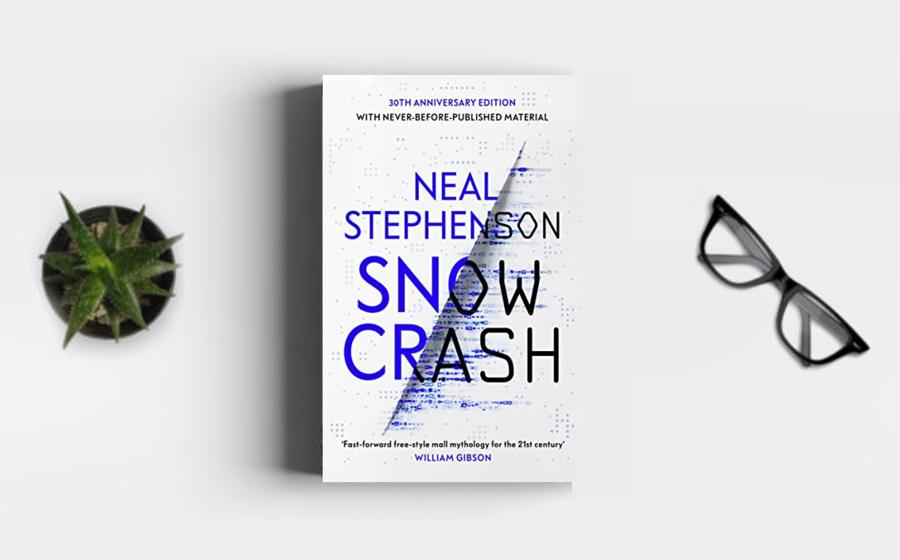"Snow Crash" by Neal Stephenson, published in 1992,
is a groundbreaking science fiction novel that
catapulted itself into the pantheon of cyberpunk
classics. Set in a dystopian near-future America, the
novel takes readers on a thrilling journey through a
complex and technologically advanced world where the
boundaries between reality and the virtual realm blur.
At the heart of the narrative is the protagonist,
Hiro Protagonist, a hacker and pizza delivery driver who
stumbles upon a dangerous computer virus named Snow
Crash. This virus, transmitted both through the virtual
Metaverse and physical reality, has the potential to
infect and control the minds of humans. Hiro teams up
with a skateboard courier named Y.T. to uncover the
mystery behind Snow Crash and prevent a global
catastrophe.
One of the primary reasons "Snow
Crash" stands out as groundbreaking science fiction is
its prescient exploration of virtual reality and its
impact on society. Stephenson envisioned a Metaverse - a
virtual reality space where users interact with each
other and digital entities. This concept predates the
widespread use of the internet and the development of
virtual reality technologies, making "Snow Crash" a
visionary work that foreshadowed the evolution of the
digital landscape.
The novel also delves into the
convergence of information technology, linguistics, and
ancient mythology. The term "Snow Crash" refers to a
computer virus, but it also has a deeper meaning rooted
in Sumerian mythology. Stephenson weaves a narrative
that connects ancient linguistic patterns with
contemporary technology, exploring how language and
communication shape human consciousness and influence
the digital realm.
Stephenson's exploration of
the relationship between the virtual and physical worlds
is another aspect that makes "Snow Crash"
groundbreaking. The Metaverse in the novel is a fully
immersive digital space where individuals create avatars
and engage in a wide range of activities. This concept
laid the foundation for later works of science fiction
and influenced the development of virtual reality in the
real world.
The novel's characters are emblematic
of the cyberpunk genre, with Hiro Protagonist
epitomizing the hacker archetype and Y.T. embodying the
streetwise courier navigating the gritty urban
landscape. Together, they navigate a world dominated by
powerful corporations, organized crime, and the
ever-present threat of a digital apocalypse.
The
exploration of corporate power and its influence on
society is a recurring theme in "Snow Crash." The
government in the novel is largely ineffective, and
power is concentrated in the hands of mega-corporations
that control both the physical and virtual realms. This
depiction of corporate dominance and the erosion of
governmental authority is a reflection of concerns that
remain relevant in contemporary discussions about the
role of technology and corporate influence in society.
Stephenson's writing style is both accessible and
dense, blending action-packed sequences with
philosophical musings on the nature of language,
technology, and human consciousness. The novel is a
heady mix of cyberpunk aesthetics, linguistic theory,
and fast-paced adventure, making it a compelling and
intellectually stimulating read.
The influence of
"Snow Crash" extends beyond literature, impacting
popular culture and inspiring creators in various media.
Its ideas have seeped into the collective consciousness,
shaping how people perceive virtual reality, hacking,
and the potential dangers of unchecked corporate power.
The novel's impact is evident in the continued
exploration of similar themes in subsequent works of
science fiction, as well as the development of
technologies that align with Stephenson's vision.
"Snow Crash" is a groundbreaking science fiction novel that transcends the boundaries of the genre. Its exploration of virtual reality, linguistics, corporate power, and the convergence of technology and mythology has left an indelible mark on the landscape of speculative fiction. As a work ahead of its time, "Snow Crash" continues to captivate readers and remains a touchstone for those interested in the intersection of technology, society, and the human experience.






